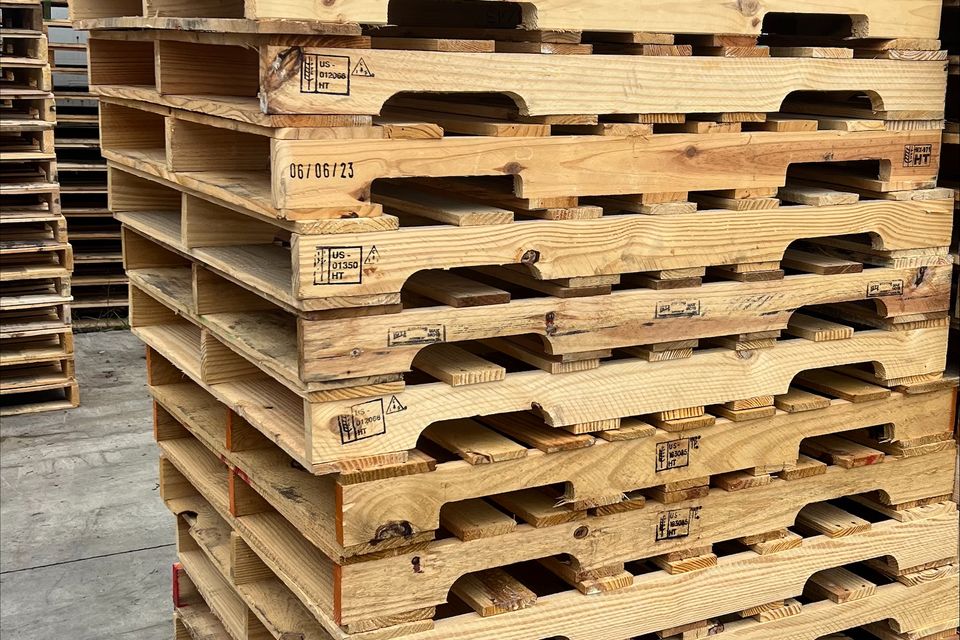
Why Are Pallets Heat Treated?
Pallets are heat treated to meet international standards for shipping and to prevent the spread of pests and diseases across borders. Specifically, heat treatment is often performed to comply with the International Standards for Phytosanitary Measures (ISPM) No. 15, which is set by the International Plant Protection Convention (IPPC). Here's a breakdown of the reasons why heat treatment is important:
In summary, heat treating pallets is a vital step in protecting the global supply chain, ensuring the safe transport of goods while preventing the spread of harmful pests, diseases, and fungi. It also helps maintain compliance with international regulations, preserves the integrity of the wood, and supports environmentally responsible practices.
1. Pest Control:
- Elimination of Pests: Wooden pallets can harbor various types of pests, such as insects, larvae, and other microorganisms. These pests could potentially be transported across countries or regions, causing ecological damage or introducing diseases to new areas. Heat treatment involves subjecting the pallets to a specific temperature for a certain amount of time to kill off any pests or eggs that may be present in the wood.
- Preventing the Spread of Disease: Some pests carried on pallets, like beetles or termites, can cause significant damage to crops or trees, while others might carry plant diseases. Heat treatment ensures that these risks are minimized when pallets are used for international trade.
2. Compliance with Global Trade Regulations:
- ISPM 15 Certification: ISPM 15 requires that wood packaging material (including pallets) be heat-treated or fumigated to ensure it is pest-free before it is used in international trade. This standard aims to prevent the movement of harmful plant pests and protect agriculture across borders.
- Marking for Inspection: Once heat-treated, the pallets are stamped with an official mark that signifies they’ve been treated according to ISPM 15 standards. This stamp typically includes a symbol, country code, and the unique number of the treatment facility, allowing customs and inspection agencies to verify that the pallets meet regulatory requirements.
3. Safety and Durability:
- Wood Preservation: Heat treatment also helps to stabilize the wood and reduce the moisture content, which can help prevent the wood from rotting or warping over time. This increases the lifespan of the pallets, making them more durable for transport and storage.
- Reducing the Risk of Mold and Fungal Growth: Wood that is not properly treated is susceptible to mold and fungi, especially when exposed to high humidity or damp environments. Heat treatment minimizes these risks by reducing moisture content, ensuring the pallets remain dry and safe for transport.
4. Environmental Considerations:
- Non-Chemical Treatment: Heat treatment is considered an environmentally friendly alternative to chemical treatments, such as methyl bromide fumigation, which can be harmful to the environment. Heat treatment uses high temperatures (56°C or 132.8°F for a minimum of 30 minutes) to eradicate pests without the use of potentially toxic substances.
5. Avoiding Import and Export Delays:
- Smooth Customs Process: Pallets that are not heat-treated could be rejected by customs officers or quarantined upon arrival at a port of entry. This can lead to costly delays, fines, and even the destruction of the unapproved pallets. Ensuring that pallets are heat-treated in advance prevents such issues and facilitates smoother international trade.
In summary, heat treating pallets is a vital step in protecting the global supply chain, ensuring the safe transport of goods while preventing the spread of harmful pests, diseases, and fungi. It also helps maintain compliance with international regulations, preserves the integrity of the wood, and supports environmentally responsible practices.
